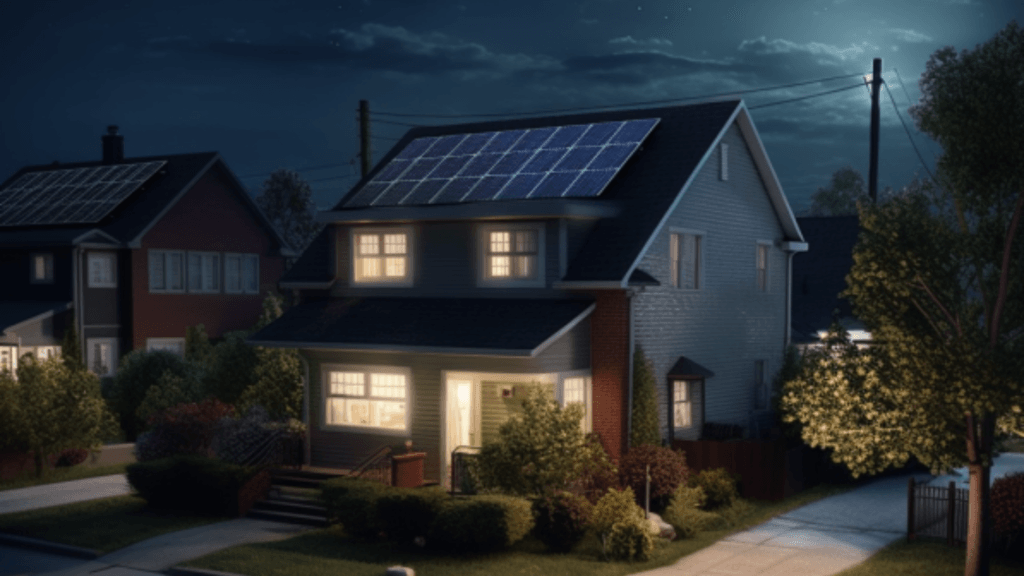Shining a Light on the Solution: How Solar Power Can Combat Power Outages

Power outages can be a major inconvenience, causing disruptions to daily life and potentially causing damage to equipment and devices. For homeowners and business owners alike, reliable power is crucial for both personal and professional use, and finding ways to combat power outages is an important task. One solution to this problem is solar power. By harnessing the energy of the sun, solar power can provide a reliable and sustainable source of electricity, reducing the likelihood of power outages and their associated problems. This blog post will explore the many benefits of using solar power to combat this issue and how it can provide a steady and consistent source of electricity, and its potential to help us achieve a more sustainable future.
Solar Power
Solar power is a form of renewable energy that is generated by harnessing the energy from the sun. This energy is converted into electricity by using solar panels, which are made up of photovoltaic cells that convert the sun’s energy into direct current (DC) electricity. This DC electricity is then converted into alternating current (AC) electricity, which is the type of electricity that is used in homes and businesses. Solar power is considered a clean and sustainable energy source, as it does not produce any greenhouse gas emissions and does not rely on fossil fuels.
In terms of reliability, solar power is a self-sufficient source of power that can prove to be a valuable asset during power outages by being a stable source of electricity that can help keep homes and businesses continue operating smoothly. With a solar power system in place, you can generate your own electricity and reduce your reliance on the traditional power grid, which is typically vulnerable to failures and outages – this is especially beneficial in emergency situations, as it allows people to continue to power essential devices and appliances, such as refrigerators, lights, and medical equipment.
In addition, solar power can also provide cost savings from not relying on generator fuel during power outages. Traditional generators require fuel to run, which can be expensive and difficult to obtain during an emergency.
Solar Batteries
Solar batteries, also known as solar energy storage systems, are devices that are used to store excess energy generated by solar panels. They work by converting the direct current (DC) electricity produced by solar panels into alternating current (AC) electricity, which can then be used to power entire homes and establishments.
There are several types of solar batteries available, each with its own set of benefits and drawbacks. Lead-acid batteries, for example, are relatively inexpensive but have a shorter lifespan compared to other types. Lithium-ion batteries, on the other hand, are more expensive but have a longer lifespan and require less maintenance. The choice of the right type of battery depends on the specific needs and preferences of the consumer.
One of the main advantages of having solar batteries in storage is the ability to use stored solar energy during power outages or periods of high energy demand, reducing the need for expensive grid-based electricity.
It also gives its owners the ability to sell excess energy back to the grid, through programs known as Net Metering. This allows homeowners to earn money for the excess energy their solar panels generate. This practice helps to reduce carbon footprint and contribute to a more sustainable future.
Net Metering
The use of solar power as a solution is strongly backed by the government as proven by the Net Metering Program – a billing arrangement that allows homeowners with solar panels to sell excess energy back to the grid, earning credits on their utility bills. In California, the state’s net metering program, known as NEM 2.0, is available to residential and commercial customers who have installed a renewable energy generation system such as solar panels.
Under NEM 2.0, customers receive a credit for any excess energy their solar panels generate and deliver to the grid. These credits can then be used to offset the cost of energy consumed from the grid during periods when the solar panels are not producing enough energy, such as at night or on cloudy days.
The credits are calculated at the same rate as the customer’s retail electricity rate and are carried over to the next billing period. At the end of the 12-month billing period, if the customer has any remaining credits, they will be paid for at the utility’s avoided cost rate, which is the cost the utility would have incurred to generate or purchase the energy from other sources.
It’s worth noting that the NEM 2.0 program has a cap of 5% of the utility’s aggregate customer peak demand. This means that if the demand for net metering exceeds this limit, the utility can either reduce the credits for the excess energy or halt the net metering program altogether.
It is also worth noting that in April 2023, California moved to a new NEM 3.0 program, which has different regulations regarding credits given to homeowners.
In Conclusion
In conclusion, we have seen how solar power can be used to combat power outages and provide a reliable source of electricity. With the falling costs of solar technology, the long-term benefits of switching to solar power including energy independence, cost savings, and environmental benefits are truly promising, and the use of solar batteries and the opportunity to sell excess energy back to the grid through net metering programs like NEM 2.0 in California further strengthens this.
We encourage you to consider the benefits of switching to solar power and explore the options available to you. With the help of solar power, we can all play a role in creating a more sustainable future. Contact Better Earth Solar today to discuss!
Get the latest news from
Better Earth in your inbox.
